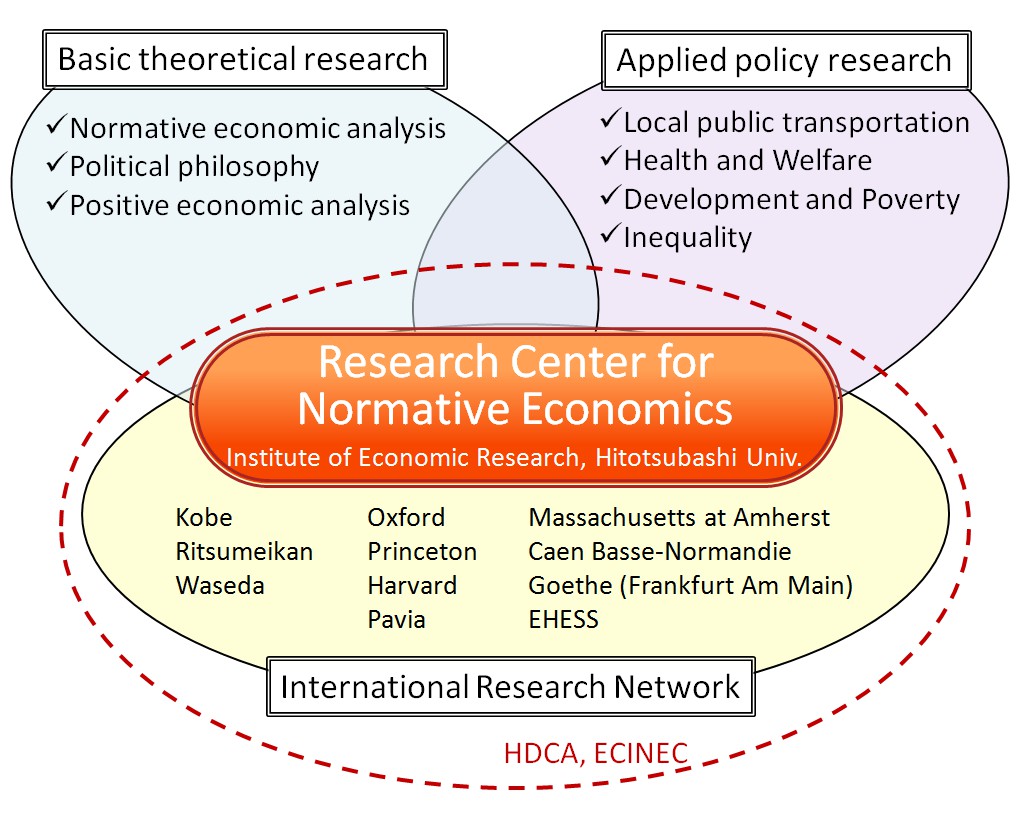Overview
The capability approach, originally developed by A. Sen and M. Nussbaum, is a method to evaluate social states and public policies by looking directly at individual well-being and opportunity rather than by focus on income or subjective utility. This approach has been widely used to assess policies in various areas such as public health, disabilities and intractable diseases, violence, and poverty. Its formulation, however, largely depends on the context, and its implementation is yet to be clearly established.
The purpose of this program is to advance international research collaboration by sending talented researchers to (and inviting prominent scholars from) well-respected overseas institutions engaged in this expanding field of research, including Oxford, Princeton, Pavia, and Harvard. Our final goal is to gather diverse context-based data and synthesize general theories by facilitating talented researchers.
This program aims to implement the following:
- Compare different capability indexes and their underlying ideas, developed for different places, situations, and populations ("positions" in short). First, we are going to look at the multidimensional poverty index (developed at Oxford), the Beyond GDP index (Princeton), and the Medical-Transportation-Disability capability index (Japan).
- Re-examine the philosophical, conceptual, and methodological backgrounds of different capability indexes in order to develop a theoretical foundation for a broader framework. We expect to cooperate with scholars based in Pavia, Harvard, and elsewhere, who work extensively on social choice theory, welfare economics, and political philosophy.
- Draw an overall "trans-positional" map of different capability indexes in order to construct a coherent and encompassing framework within which we can apply the capability approach, thus allowing for policy recommendations across a wide range of areas such as health care, labor, and civil engineering.















